Stachys Floridana, Culinary Pretender
I have read from a good source that all Stachys are edible. I politely doubt that for three reasons. First there are 300 to 450 of them depending on who’s counting. It’s doubtful all of them would be edible. The roots of one defintely are not edible. Next, many were used for medicinal purposes which also suggest some are not edible, and even if they were medicine often tastes bad. Lastly, and perhaps the most compelling reason, is that who’s in the family and who’s out is in flux. Botanists are a fickle lot. It could make things more iffy particularly if a non-Stachys non-edible was included as a Stachys. But, what I do know is our local Stachys is edible and bears an underground resemblance to a relative that commands high prices.
Stachys floridana, (STAY-kis flo-ri-DAN-ah) the Florida Betony, is one of the most common urban plants found in Florida. Sun and a moist lawn are magnets for the versatile weed. The above ground parts — read young plants and leaves — can be cooked like greens. They are, however, musty in flavor. Think of them as a famine food. Tea can be made from the dried leaves and the seeds are edible. But, the crowning glory of the Florida Betony, so to speak, is its root, actually a tuber. These cunchy, tasty treats look like big, fat, white grubs. Others think they look like the noisy end of a rattle snake hence the other common name, Rattle Snake Weed. Pictured above are some small, early season roots. The Florida Betony puts on a tuber in spring and then kind of takes the hot summer off to return in the fall. In late spring the tubers are often stark white. In the fall they can be tan and in time get soft and not palatable.
These humble tubers infest many a southern lawn and literally millions of dollars are spent every year to get rid of them: Read a lot of herbicide use. Another family member, Stachy affinis, aka Crosnes, does not have that problem. They sell for about $150 a pound. Actually, I’ve never seen a crosnes growing in Florida. It was originally from China, went to France in the town of Crosnes, and from there to the fancy Paris restaurants. That brought it to cultivation in and around New York City.
In restaurants of stars, Stachys affinis, also called Chinese Artichokes, are hard-to-get gourmet delicacies. It makes one wish Florida Betony could be substituted. I’d like the idea of having a few thousand dollars of these in my lawn. Maybe it’s a totally untapped market. Someone should let the chefs know there is a possible alternative. No doubt a good price break could be worked out, say… $100 a pound.
The Florida Betony is a good example of attitude and knowledge. First is a willingness to eat the weeds, a theme dear to the author’s heart. The other is benefiting from that knowledge. The Florida Betony is the poor root of the pair, not able to command $150 a pound. It even has a different number of chromosomes than the S. affinis (this genus is in flux.) But, the Betony is good eats. I don’t have to pay $150 a pound for the S. affinis when I can get the S. floridana for free. Pass the salt and pepper please.
There is also one other known use for the Florida Betony. It is a source of a sugar called Stachyose, according to its manufacturer, Schuttl et Benth. It is less sweet than sugar and is used as a bulk sweetener. It is also not completely digestible. Stachyose promotes friendly bacteria in the gut and — according to research — can inhibit the growth of bacteria that can cause some pneumonia and vaginal infections. Tasty and healthy. That’s a win win.
Stachys is from Greek meaning “stake” or in this case a flower spike. Floridana means of Florida. “Betony” has a long linguistic history. And for this it helps to remember that in olden days letters were not pronounced the same way as they are now. Even today in Greek the B has a V sound. The original name for Betony was Vettonica. It was named after an Iberian tribe, the Vettones (living in now what is northwest Spain.) The Vettones, however, were Celtic — read proto-Irish — and lent their name to Breton, Brittany, Britain and even the encyclopedia no one buys anymore. The Vettones were thought by the Romans to posses special medicinal magic that drove away bad spirits. A common Roman proverb for someone troubled was, “sell your coat and buy betony.” Most of the plants in the mint family that were named Betonica are now called Stachys. Affinis (ahf-EYE-niss) is Latin for “similar to.”
No one does nutritional research on the Florida Betony. However, nutrition for the S. affinis per 100 grams is: Calories 75, total fat 0, dietary fiber 2 grams, protein 2.6 grams, carbohydrate 17 grams, cholesterol (mg) 0, sodium (mg) 4, sugars (g) o.
Incidentally, if you live in a northern clime two other Stachys with edible tubers are available. The first is Stachys palustris, the Marsh Woundwort. It can be found in the northeast quadrant of North America, basically the Mason Dixon Line north and as far west as Illinois and Manitoba. The tubers can be cooked in a variety of ways, or dried and made into bread, and the young
shoots are cooked and eaten like asparagus. The second, according to Dr. Francois Couplain, is the Stachys hyssopifolia, the Hyssopleaf Hedgenettle (say that 10 times fast.) It’s found in states that border the Atlantic as well as Kentucky, Indiana, illinois, Iowa and Michigan. Seeds of the Stachys scopulorum were eaten by natives in the desert southwest of North America and Stachys sylvatica is consumed in Europe, and about New York City.
The roots of Stachys officinalis are not edible. They are bitter and can make you throw up.
Green Deane’s “Itemized” Plant Profile
IDENTIFICATION: Florida Betony is square-stemmed, erect, hairy; tubers are segmented and resemble a rattlesnake’s rattle, usually little finger long; The stems up to 18 inches tall. Simple leaves opposite on the stem. The flowers occur in clusters of 3-6, sepals fused, forming a tube which is hairy, with 5 lanceolate lobes. The petals are fused, 2-lipped. The upper lip is somewhat erect. The lower lip is 3-lobed.
TIME OF YEAR: The best roots are fat and ready to eat before Florida’s hot summer begins. Roots near surface usually many found together. During the hot months the plant can disappear to reemerge in fall. In northern climates the roots are harvest in the cool of fall.
ENVIRONMENT: Moist yet well-drained areas, such as lawns.
METHOD OF PREPARATION: Roots raw or cooked, crispy in salads, great in stir fries. Leaves and shoots of the plant can also be eaten raw or cooked. They are, however, rather musty tasting and best mixed with other greens. The Indians reportedly ate the seeds as a famine food. Some say the flavor of the tubers are like cauliflower where as I lean toward jicama. The texture, however, is like a radish. Lastly, the leaves of some Stachys species were smoked like tobacco. The roots of the Florida Betony also have chemicals which have “antioxidant activity. “

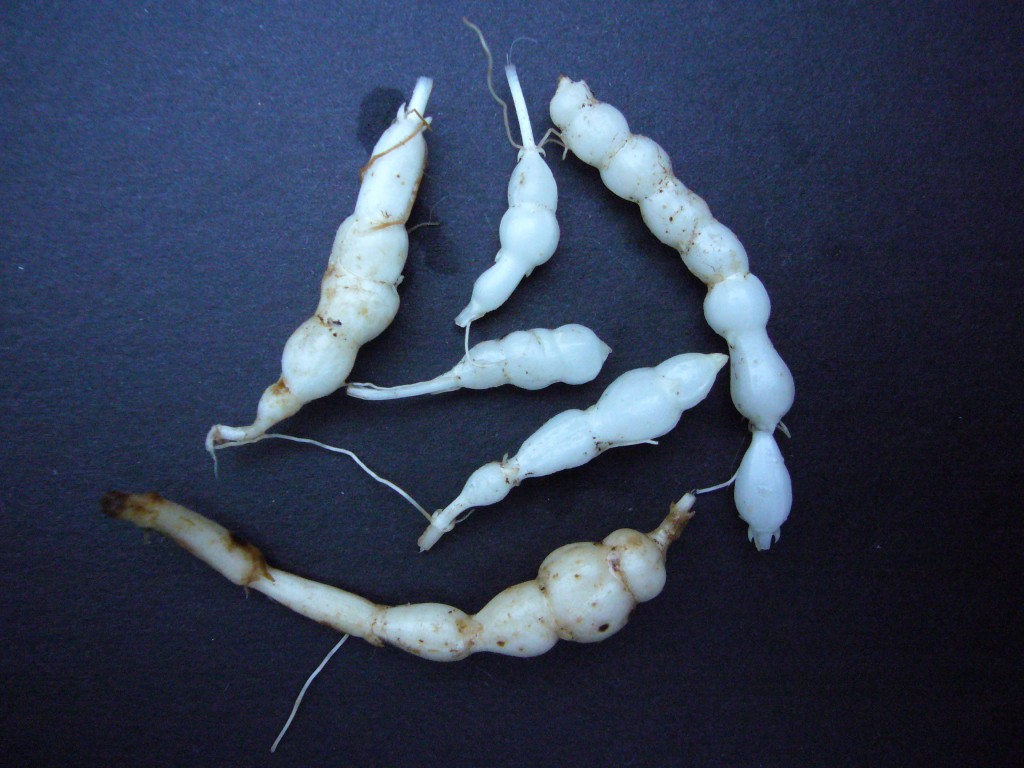
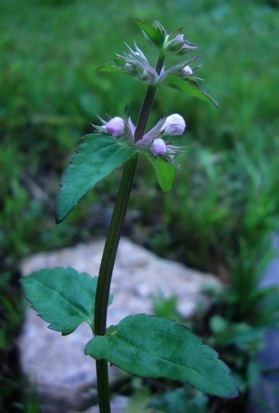
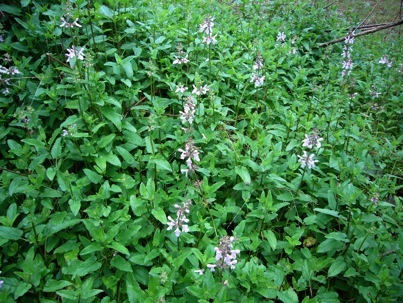
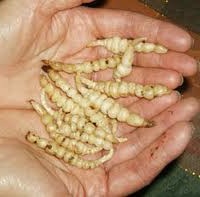

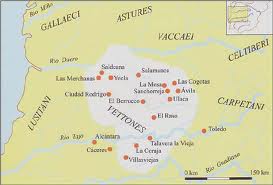
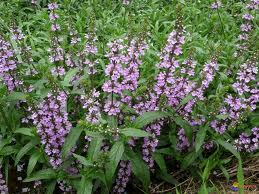
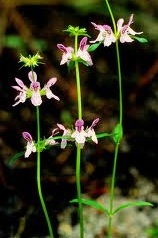

Hello – as a native of florida, i am really enjoying this blog. Your writings have shown me a new appreciation of nature. As a child in central florida, i found these betony roots in the yard when i was playing, and curiosity got the best of me. I ate one of them, and it tasted like a radish….they look like a grub worm but taste like water chestnut, with a bite. Every year, I would go out to the garden and find a few poking out of the ground, brush them off, and munch on them for old time’s sake. Thank you for this blog!
What timing. My bf and I were doing yard work, he had mentioned this weed a couple times as it’s taught in boyscouts to be edible in case you are lost in the wild in Florida. We were working on the yard, digging up a dirt pile covered in these weeds. Salvaged about 10 tubers while digging, washed and in the fridge.
I just dug about 500+ of these tubers out of my yard today ..and that’s only from about a 40-50sf area. My yard is completely infested w/this stuff. Hmmmmm…so I guess I should go outside and bring these in, wash them off and put them in the fridge ??
no no! you should leave them where they are and harvest them as you need them. It’s food.
My husband’s side of the family calls these plants chewfus for some reason. We have them everywhere here (southeast NC) and it is a battle to keep them from taking over our grass. Just found several GIANT tubers while weeding my flower beds and discovered that they are a bit tough when larger and so not as tasty. But they are really delicious when small and tender. Kids and I always have a nice snack after weeding.
Which county in NC? I’m near Raleigh, and can’t find them growing anywhere around here…
We are in the Wilmington area if NC and these suckers have taken over our yard after a hurricane with tons of rain. We want them out of the yard
Chufa(sp?) is something different from the Fla. Betany, ( rattlesnake weed). We grew chufa years ago for domestic swine to root and eat in open farm fields before hog feeding houses became popular. We boys would occasionally dig up some of the chufa nuts to eat raw. Tasted similar to raw coconut meat. The Fla. Betany seems somewhat similar to Water Chestnuts, used in many food dishes. . Chufa is a current well known wildlife planting for several different wildlife species.
I just came in to do some online research, because I have discovered the Stachys Floridana (Betony) in my back yard, quite accidentally, because I have a wild hog that’s been coming in at night at the back yard and digging big time, and guess what he’s eating???? The Betony! I found several of the tubers in the holes that the hog dug, and, picked one up and cleaned it off, because it looked almost parsnip white, and it looked edible, broke it, and it was pungent, and I tasted it. Slightly spicy and musty. I’m going back out and dig up a bunch of them! These are located about 10 miles outside of Bushnell Fla off of a partly dried up canal.
i wander if this is what my friends dog is smelling underground and digging for in his backyard. its a hound
I have harvested 5+ pounds of Florida betony root from my front yard in Gainesville, FL so far this year. I’ve stir-fried it, added it to beef stews, and made bread-and-butter pickles out of it.
I really would love to know what the flavor difference is between crosnes and Florida betony root.
There’s no appreciable flavor difference.
If there is no difference, how would a buyer know if you substituted one for the other?
If you will compare images of the two species, the affinis will be seen to have a glossy, shiny appearance, while the floridana is rather dull and matte. This assessment assumes that both are freshly harvested. Even at its freshest, when still wet from washing, the floridana doesn’t have the fine glossy look to it. I think for sheer marketability, the affinis has the upper hand based on its more pleasing appearance. Pickles made from the shiny affinis look “better” than those from floridana, so commercially, it makes a lot of sense to use those.
Another thing that is maybe even more easily seen, is that the form of the affinis tubers is “prettier”. It is generally more symmetrical and proportional as one “bulge” relates to the next along the tuber. If you imagine each bulge is a bead, in the affinis, each looks pressed tighter to the others, while in the affinis they seem more looser and a little “puffy” looking. I don’t know that the “average” gardener would even be concerned with an possible substitution, but many might, and those who are aware of there being the two species would be able to tell if they had researched them.
If the buyer you mention is a restauranteur, I would think that an experienced chef would be able to quickly tell the difference in the two, if he has knowledge of the floridana tubers. (A less-knowledgeable but aware chef would see the difference in the two, but might not know the reason.) It would be a simple thing, like knowing that the eggplant you’re looking at is past its prime based on the gloss of its skin alone.
I think that any difference in flavor is more due to the soil the plants are grown in rather than any appreciable difference in the two species. This may be why there are those palates that swear to a difference in the two. I think, too, there could be a certain amount of suggestibility involved when sampling them. A certain false expectation, maybe, based on the “gourmet’s” affinis vs. the “pedestrian” floridana. How many people can tell a homegrown Granex onion from one grown in Vidalia? It would be interesting to taste test the two crosnes, if both were grown under the exact same conditions, at the same site.
Too much is made about the price thing. The $150 a pound claim is based not on the price from a produce supplier, but from the cost per tuber or potted plant from a nursery, and what they ask for online. They can ask for a lot more than they are worth (based on how prolifically they produce more tubers) because so few outlets offer them. It’s a grower’s market to a certain point, but prices seem high for most plants online, so it’s relative to a point, based on a perceived “rarity” in the marketplace. And that’s true, but if it were more commonly grown, there’d be lower prices more commonly found.
Because they are so perishable, I doubt that many restaurants would have them at-the-ready unless they had a certain clientele assured for the “rare” treat, and I can almost guarantee, they won’t have paid anywhere close to $150 a pound. The cost would be on the high side because of their fleeting nature and due to careful hand-harvesting that must be done to avoid broken and bruised tubers. A smart chef would have a huge tub or two out back in the herb garden ready to harvest from when called for, if there was ever enough demand for them at all at his restaurant.
Anyway, the cost of producing either tuber is the same, so there really wouldn’t be a difference in one over the other in that regard. One grows as easily as the other. Any difference in price would be based on the perceived value of one over the other, and part of that might be the appeal one has over the other from the diner’s POV.
Hi Andie…I live in the lowcountry of South Carolina and would love to try to pickle these do u have a recipe
I really want seeds! The large herbaceous perennial species of Betony we have here in Israel are all either extremely rare and protected of really patchy and hard to find, and nobody in the local botanical community has ever thought it worthwhile to have a look at their underground parts! I am pretty confident that the Florida Betony will not become a weed here, as it will never be able to stray very far from from the drip irrigation line!
Can someone collect seeds for me? I have quite a lot of interesting species with which to pay back! My e-mail: c-dl@zahav.net.il
I have plenty of free privet if someone likes that, HaHa!
WE MOVED TO OUR CURRENT HOME AND BROUGHT OUR BOXWOOD HEDGES WITH US AND ALONG CAME THIS TYPE OF PLANTS,IT HAS THE SAME KIND OF WHITE LARVA ROOTS THAT SMELL KIND OF EARTHY AND NUTTY,IT SPREADS LIKE MINT.WE LIVE IN SOUTH CAROLINA AND IS THERE ANY POISONOUS LOOK-ALIKES.LOVE THE PLANT KNOWLEDGE YOU SHARE,KEEP IT UP.THANKS.
I was very happy to come across this article because in my garden this plant grows in abundantly. I felt in my spirit that this plant and roots could be eaten so I went on a search to find out for myself. I am thankful that the great spirit and my ancestors give me wholesome food to eat right outside of my door. I will be able to survive when the food shortage really gets short.
I found some Florida Betony in my yard and dug up some of the tubers. After washing it off, I tried a bit, and it tasted quite good, but then my tongue started feeling a little bit numb. Do you know anything about this? I wasn’t sure if it was just part of how it tasted or something else. Thanks!
I have never heard of that happening to anyone with this plant.
is it the first wild food you tried? maybe you just psyched yourself into believing that the thing you ate might have been toxic?
Is there anything else that has tubers that look like these? We found quite a lot of them in our yard while raking leaves (very soft, sandy soil so raking with a hard rake digs in), but no plants seem to be coming off of them. I read that they should have already been growing by May, but the grub looking roots look quite nice and crunchy. Just want to make sure before we give them a taste.
It’s a right of passage for our spring garden bed preparation to dig out the “rattlesnake roots” and throw them to the side of the weed pile for later use in salads, pickling or stir frys. After we got bee hives however, I make sure that I leave plenty for the bees. At that time of the year thereis not much blooming in my garden and it’s one plant the bees are constantly coming to!
For salads I often put the Betony tubers in a small bowl and shake some ume plum vinegar (brine from the Japanese pickled ume plums-nice and tart and good for digestion) over them, letting them sit for about a half hour before adding them to a salad. Apple cider vinegar makes a nice quick pickling for them as well and they do add a nice crunch as previously mentioned if added towards the end of stir fry dishes.
P.S. A Japanese turtle brush made from palm fibers works great for scrubbing the dirt out of all those little creases or any root vege! http://www.naturalimport.com/inc/sdetail/7924
Have you tried Andy Firk on facebook?
i hope your neighbor knows!!! lol
I live in eastern PA, and around here we have quite a bit of wood betony, Stachys officinalis. It seems to be an acclaimed medicinal herb, but I see nothing mentioned of its edibility. I’m wondering if that is generally overlooked, or if it is one of those species you mention whose use is restricted to medicine. Have you given it a try?
I know of one reference and it says no: The gardeners dictionary – Philip Miller – 1835, Page 645. The author states in his entryfor Betonica officinalis the following, to quote:
The roots are bitter and very nauseous; in a small dose they vomit and purge violently.
I only recently found out what this stuff was – recently it started taking over EVERYTHING in my yard – it’s growing right up to my blueberry bushes and HOW do we get it out of there? Blueberries are shallow rooted and these things go deep! May try eating them but still – don’t they compete with everything. Where we are, 5 acres on a dirt road, we really aren’t too obsessed with lawn and trying to keep it alive except in the very front of the house but I really hate that this stuff took over the flower beds I carefully dug (and found the tubers and took them out) and planted last year and now I’ll have to move the mulch and re-dig it all and next year they will be back! Between those and the vines with spines (smilax or something?) it’s a scourge!
Place 6 to 8sheets of newspaper under a 4 inch layer(approx) of wood mulch to exclude sunlight to starve weeds. The newspaper will break down feed the soil and will need to be replaced probably at least once a year. It’s easier if you wet the newspaper sheets first prior to mulching.
Another option is to use a sheet of clear plastic to cook the soil with the suns heat. Just seal the edges with edging beams, or, good size stones. It takes a few weeks, but, even the seeds are killed.
Sound like a Wonder of a plant. low key, hardy, edible. Anyone down there interested in putting a bunch in a box and sending it to Ohio? They are not listed as a noxious weed here, so no problems with legally getting them here, and I am pretty sure our weather will kill them every year, so I will have to pot some up and keep them inside to keep them alive. I would send someone a money order for the shipping costs if we could work this out. VERY interested in having some in captivity up here!
Hit me up to talk about it. Thanks. TC ( Tcairns 67 @ yahoo. com)
I just read of your interest in having some Florida Betony shipped to you. Has anyone sent you any and did you like it? Have you been successful in growing it in Ohio? I am always interested in doing wholesome, legitimate things that make a little extra money and allow me to be outside. Let me know if you’re interested.
No, Bonnie. No one has contacted me about getting be any. I would still LOVE to have some to try, although, I know going into Ohio winter is not the time to try.
You ended with “let me know if you are interested.” I’m not sure what you are asking. interested in what? Do you have some of this growing you could send me in the spring? If so, please contact me via email (tcairns67@yahoo.com) and hopefully we can work something out.
Are u still interested in the rattlesnake weed
Ebay, Amazon, and, Etsy.com all carry it. Not cheap, though. The white, red, and, yellow flowered Wood Betony produce similar roots. All 3 sites offer 100 – 1000 count seed packs for less than $3.00, some listings with free shipping.
How do I get rid of it once it has infested my flower bed?
Eat it.
Interesting article on this rattlesnake weed. I live in Woodville,Texas and I am constantly finding these bright white tubular shaped roots in my yard. They look like artificial plastic lures to me. I always wondered what they were. I brought some to the County Extention center but they were not able to identify them for me. They tend to shrivel up overnight to nothing. So is there a particular name for the ones found in Texas?
How do I get rid of this stuff? I don’t like it at all: it’s talking over my flower beds and yard.
Eat it.
Greene Deane,
Your article was a big help. I live in Broxton, Ga., We found the stuff in our garden and in our yard. We asked someone at the feed and seed store and he told us that it was Florida Betony. We had already figured out that it was edible. We are gathering some for a salad even as I post. I live close to Jacksonville, Florida, about two hours away. We never noticed the Betony before 2013.
Carolyn
Carolyn
A friend recently told me that she eats these weeds from her yard. She’s grows her vegetables in woodchip mulch, not soil. When I was a newly-wed many years ago, my husband’s friend managed a large plantation where chewfus were planted for wild turkeys. We’d dig a few when we were coon-hunting. Delicious underground nuts, I thought. It being dark I really didn’t know what I was eating. When my friend told me betony was edible, I thought of chewfus. Now I see Betony tubers are called that in NC. My yard here in SC has a large crop. I’m eager to sample some as soon as they get large enough. Thanks for an interesting and informative blog .
From what I’ve read, complex sugars like stachyose tend to promote flatulence… something that crosnes are known for.
Should catch on then with fraternities…
Yogurt – fermented foods – help with that.
I have lots of this in my yard and garden. What do you know about eating the flowers? I snack on the flowers, and of course I dig the roots for salad. Is anyone else out there eating the flowers?
As the leaves can be made into a tea, and the plant cooked as a famine food,there’s probably no problem with the eating the blossom./
Hi Deane….I have a zillion of these and was wondering if the roots could be dried for use as a tea etc…or are they better raw…wish I coul harvest and sell these I could make a fortune. ..the Florida betony one by the way lol
These showed up in my yard last year, and by this spring had spread to huge portions of it. Now I’m trying to move out and my landlady wants to keep my deposit for the weeds, blaming me for the “damage” to her yard. I’m going to tell her to eat it.
Thank you!
I would LOVE to be a fly on the wall when that happens…!
Yeah– good luck with that…
Deane, you are the man! This is so cool; to just walk around and show people edible plants all around them. People think I’m a genius until I show them YOUR genius… then, of course, you have a new convert.
Have you thought about bringing up an ingenue? You are such a valuable asset that we need to clone you. And you, and you too…
Keep up the good work!! And Thanks!
Florida betony is a great nectar plant for honey bees and bumble bees, providing two nectar flows a year in Gainesville, FL . When I first moved here I spent long hours trying to get rid of it in my “flower beds.” Once I began keeping bees I realized they are feeding from the volunteer wildflowers like betony and tickseed (Bidens alba) and cranesbill geranium (Geranium carolinianum) and spiderwort, instead of from the flowers I intentionally planted! Now I just let all of those wildflowers grow and bloom and set seed, then tidy everything up with a mowing in our hot, dry May. Putting up a sign that says “pollinator garden” may invite neighbors to join you since a wildflowery lawn is still viewed as somewhat subversive.
Yes! Love this.
I tried that here in MD a few years ago. I actually got fined for not cutting the grass. Nevermind that there WASN’T any grass. I had intentionally pull it out to make room for the native wildflowers.
Critics!
I had heard that Wood Betony is a hemiparasite, a plant that is partially dependent upon other plants as a source of water and nutrients. She even Called Betony invasive and that it causes other plants around it to die. Do you find this true about (Stachys floridana)? I did manage to find an article about another common plant named Wood Betony (Pedicularis canadensis) put out by the US forest Service stating that Pedicularis is a hemiparasite. Are these two plants related? Could they share this trait possibly? Thanks in advance for your help.
As far as I can tell they only share a common common name, Betony.
Thanks Dean! This plant takes over my garden every year. Little did I know I should have been more respectful of it. Why fight it? I’m going to go out and eat some! I live on the coast of NC. I struggle every year to grow vegetables. I know growing native plants is a big thing these days. It makes sense. I’ll grow what wants to grow and forget some of the things that don’t even like it here! Thanks again for a fresh perspective!
Does anyone know where I can buy Rattlesnake Weed tubers? I need to prepare for a trip and would like to have them handy in the event of a sting or bite.
They are not used for that purpose. They are eaten. They are called Rattlensnake weed because the tubers resemble the rattle snake’s rattle.
Ebay, Amazon, and, Etsy.com all have them, but, not very cheap. You might be able to find someone selling seeds.
weirdly I’ve found a plant that’s very similar in South Mississippi- the root looks just the same, the foilage looks just like the one in the top picture, but the flowers are different. Not tubular, but tiny clusters of star shaped pink flowers with four petals to each flower.
I will probably avoid it, just in case I’ve stumbled upon the one that isn’t edible.
When we harvested so.e this year they weren’t as sweet as we remembered. Does anyone know if that means we are too early or too late?
Too early… it will take a couple of more months to fatten up.
I stumbled across these in my yard pulling weeds. We tried them and at first they were tasty, then a little spicy like a radish and then the horrible bitterness took over. These are nasty! Is there something we can do to make them more palletable?
I’ve never heard of any one having that experience. Do you have the right plant? The roots are not spice at all, very mild.
I’ve found an easy way to grow lots of betony tubers that are easy to harvest. Now I would like advice on how I might store them. To grow them I just created a wire cage about 20 inches wide and 30 inches high. It was filled with partially decomposed lawn clippings before I added betony roots. No fertilizer. Plants grew the whole winter and tubers were harvested in early May. I’ve expanded my operation considerably and in some containers will add fertilizer and lime. Advice on storage, anyone?
Sounds like the way to commercialize them… they do pickle well via lacto-fermentation but don’t store well that way beyond a few months. They darken considerably.
I read that both dry peatmoss, and, dry sand work well. Oeople used to store other roots that way before refrigerators were invented.
I read that both dry peatmoss, and, dry sand work well. People used to store other roots that way before refrigerators were invented.
I’m pretty sure I have this in my yard. They started popping up a few months ago, but I couldn’t find the tubers. Was I just too early? When is a good time to harvest?
Now until the hot summer months.
I have a patch of Betony in which many of the tubers are particularly large. My first inclination was just to take whatever I wanted for a particular meal (or jar of pickled tubers) but after reading the “in time get soft and not palatable” part of this article I’m wondering: Do the tubers live from year to year to sustain/propagate the plant or should I go ahead & pickle a good batch for use over the next few months? I don’t want to deplete the entire patch for no good reason (though some new cows might prevent as much growth next year).
They are seasonal and the off season the plant draws on the energy in the root.
The folks that want to plant it can get some fresh tubers and plant them; they will continue to sprout as long as they are alive. Also, they DO make terrific sweet pickles, and terrific spicy pickles. Occasionally they will turn an unattractive green color if not kept refrigerated, Once you have them, they are essentially impossible to get rid of, except for repeated chemical applications, so if you want them, and you plant them, be sure you are willing to keep them!
Thank you for all you do. We live outside Gainesville, FL and our favorite local farm is Frog Song Organics. They sell these tubers and are getting the local chefs into using them as crosne substitutes. I just dug up my first batch and I’m thrilled to be incorporating them into a big lunch for friends. Check out Frog Song Organic farm for great produce! They sell in markets all over Florida. Thanks again Green Dean for the foraging help.
Hi Deane, Thought you might find this interesting: As has been mentioned a few times, the tubers tend to be very crisp when fresh but quickly turn soft and rather unappetizing after a couple days. Recently, I had a bowl full of tubers and had to leave on a 2 week trip and could not use them. It occurred to me that the problem of turning soft was really a byproduct of moisture loss so, as an experiment, I used a clean plastic sour cream tub with a lid, put a damp paper towel on the bottom, then the tubers, and another damp towel on top. I set the lid on top but left it slightly cracked to breathe. It’s now been a little over 4 weeks and the tubers are still perfectly crisp (though they’ve begun to sprout new roots). Anyway, just figured I’d share. Thanks for all the info!
I recently moved. I was outside digging in some soil to fill in a hole in the ground when up came this “rattle snake tail” looking thing. I shrieked with delight because I remember watching Green Dean’s YouTube episode on this “weed.” I could not remember the name but I knew it was edible immediately. I knew it was “something Floridana, but after doing some research, recognized it as being Stachys Floridana. You would think I had struck gold. I was that excited. Whoever lived here beore plated a bunch of elephant ears so the SF are fighting the elephant ears for positioning. I would have to dig up some of the EE to get to the SF. Is that a problem with them growing together? I have not tried any yet for that reason. I do have another patch growing next to a broken down fence but I believe that fence was made of pressurized wood and the SF may not be good to eat if they have absorbed leeched chemicals from the wood. Thoughts??
Maybe this is why some Thing is digging/foraging in my yard! Every week, i find several new holes (that arent tunnels). I keep saying i need a trail camera.
Had to hunt for this in South Florida. I’m so excited! Just planted about 10 tubers. Ate one. Absolutely sweet, crispy and delicious! Can’t wait until next spring!
Deep fry the tubers. Wow.
Where can I find information on the nutrition?
Try them in Asian style ( seafood) fried rice. Substitute for water chestnuts for crunchiness.
I have an overabundance of these tuber/grub looking weeds throughout my yard. Am I to assume they are also edible?
For years I have been spraying herbicide on the ABUNDANT crop of Florida Betony in my yard. After reading all this about the plant being edible my question is – How long do I need to wait for the herbicide ( both Roundup and Atrazine) to leave the soil/plant before I should try eating the tubers?
Usually one season. Most killer chemicals are designed now to last one season. Otherwise there is no profit in selling it anymore unless it needs to be replace annually.
I live in Wilmington NC and I am inundated with them. I have tried for years to get rid of them. They are extremely invasive. I stopped trying to fight them years ago. So now I leave them be. So you are saying I can eat them? In the beginning of the article it said there could be 450 varieties and some you cant eat so Im confused. Please clarify before I start feasting. Thanks!
A friend gave me some betony root that she had pickled with dill. OMG. Fantastic. I live in North Florida so it’s now too hot to plant betony root. But I’d like to grow the root in a raised bed specifically for pickling, etc. When to plant?
Thank you for sharing all of your knowledge and hard work. This blog is the best one of its kind on the internet, without a doubt.
Florida Betony is one of my favorite wild snacks and it grows prolifically here in Coastal South Carolina. I’ve found that the leaves are edible and tasty if prepared in a certain way. I like to pan-fry them in a little butter and garlic salt until they become chip-like and slightly crunchy. I highly recommend. The stems should be removed, however, because they are really tough and fibery when prepared this way.
Beyond this snack, I just love Betony in general. It’s a pretty little plant and it just smells like slightly sweetened Earth. I like them so much that I grow this plant intentionally and I think my neighbors hate me for it 🙂
Can you dry the leaves for storage and tea making? Or can tea only be made from green and fresh leaves? I harvested some, stalk and all and have them hanging in a closet to dry. Thanks in advance for any info you could give me
You can dry the leaves for tea but it has a musty flavor.
Thanks for the reply. I always hear the leaves being described as musty, but I actually like them raw. I snack on them occasionally when I’m working out in the garden. I’m a weird one I guess. Lol
What do the flowers taste like? Did you ever confirm they are indeed edible? I like to make jelly with wild flowers and would try some if they are edible.
I know the flowers cooked are edible.
I was just introduced to this plant a few days ago. After research on the Betony plant, I found medicinal references that reported It to be beneficial for trigeminal neuralgia (a condition I have suffered from for over 20 years) . In the last 36 hours I have found that my pain is drastically reduced by eating at least one tuber with every meal. It seems to good to be true. I have tried hundreds of herbs and drugs previously to no avail. I even spent thousands of dollars on hyperbaric treatments! I will continue to use this and see if it is just a coincidence or not. Thanks so much for this information.
Great with ranch
I hope they’re good friends, but they probably won’t be for very long!!
Stachys floridana, the Florida Betony. Accidentally, I discovered that this root reduces my blood pressure. I harvested about 10 from my backyard and ate about 3 each day. I continuously monitor my blood pressure and I am certain that this root had an effect on three different days. My blood pressure unfortunately went back up when I depleted my roots. So, I am trying to find a way to get it daily. (My comments are based on the roots, I did not eat the leaves.)
For three years when I need some well-composted oak wood chips I go and dig in what remains from a huge Water Oak, I had removed from behind my home in Tallahassee. Finally it happened, a few weeks ago while digging for the compost and disposing of these pesty snow-white 2 to 4-inch tubers resembling bean pods, my dog took one, ate it returning for more. So I cleaned and ate one and curiosity had me search the internet and I found it to be Betony or Atachys Floridana. I am using it now in my soup, salads, stir fry, and have some in a jar pickling with apple vinegar, agave syrup, garlic, black peppercorns, and scallions. I wonder why this very useful and apparently very healthy plant is not more popular. It grows wild and needs no care. Another gift from Moother Naure.
Hey there, I think your site might be having browser compatibility issues. When I look at your website in Opera, it looks fine but when opening in Internet Explorer, it has some overlapping. I just wanted to give you a quick heads up! Other then that, wonderful blog!
I have no idea what “Opera” is…
I don’t know why people worry about weeds “taking over!” lawns
They stay green all winter! Keep ‘m short and call it grass. The neighbors will want to know how your lawn looks so green and nice in January. I’d love to have a yard full of free food! What’s the big deal about having a golf course for a yard. Jeeez.